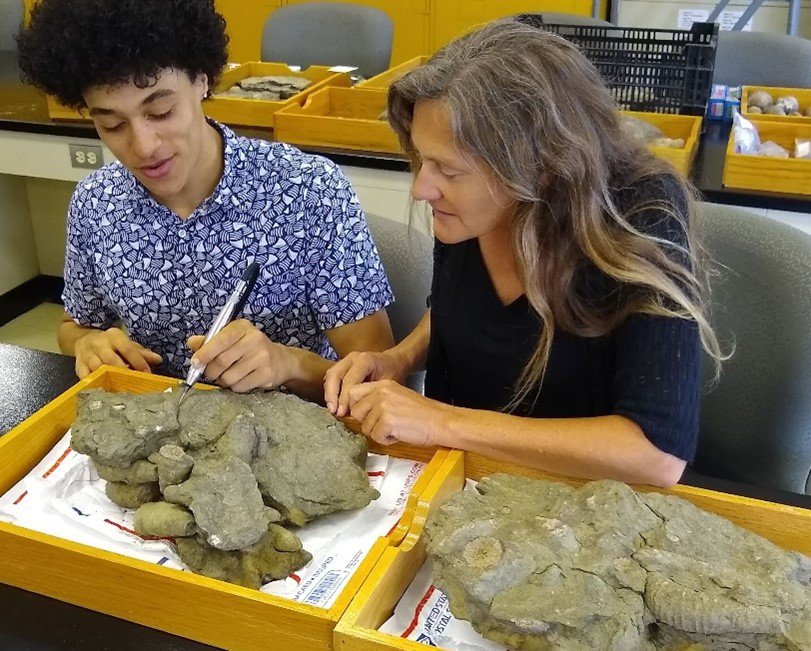
Late in April of this year, the department received a communication from Nancy Furdock, asking if someone might be able to come out and look at some interesting rocks uncovered while digging a foundation for their new home high on a ridge in Pompey, NY. After waiting for an overnight snowfall to melt away, Profs. Linda Ivany, Cathryn Newton, and Chris Junium, and PhD candidate Shiv Das and MS student Josh Owens joined her at the dig site and were amazed to discover an intact middle Devonian rugose coral bioherm beautifully exposed in the walls of the excavation. Packed with several species of corals and sprinkled with an assortment of brachiopods, mollusks, and bryozoans, the ‘reef’ presented a 3-dimensional snapshot of the sea floor 380 million years ago. Material removed from the foundation site was piled high in mounds nearby, comprised almost entirely of fossils!
The team returned to the dig site several times over the following week, working quickly to document and sample the intact reef before the foundation was poured. Collections of the associated fossils were made from in situ material and the spoil piles, including some large intact blocks showing spatial relationships among the corals. Ivany brought her ‘Mass Extinctions’ seminar group out to see the rare find with co-instructor Jesse Czekanski-Moir (ecologist and PhD candidate at SUNY-ESF), and he returned again with ESF invertebrate zoologist Prof. Rebecca Rundell to examine the corals.

Newton and Ivany confirmed that this is the Joshua Coral Bed, in the Ludlowville Fm of the Hamilton Group. They will work up the paleoecology of the site together with undergraduate student Martin Fernandez, who will also be removing matrix from an intact block of reef to reveal spatial relationships and connections among the corals. Das and Junium plan to extract organic matter from the coral skeletons and examine nitrogen isotope ratios up through the reef to compare with sedimentary organic matter. This will hopefully shed some insight on whether the corals may have harbored photosynthetic symbionts (like today’s reef corals) or not.
The owners are tremendously enthusiastic about the discovery and have decided to rename their property “Coral Ridge”! Instead of using all the excavated material to fill in around the foundation, they have decided to move the bulk of it to another location to create a ‘hardscape’ where friends, family, and school groups can come and collect fossils.
Thank you, Nancy, for getting ahold of us and sharing your discovery!

